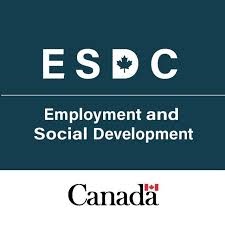
Open
Ontario Youth Apprenticeship Program (OYAP)
Last Update: December 3, 2025
ON, Canada
Supports high school students in skilled trades apprenticeships
Grant and Funding
Wage Subsidies And Interns
At a glance
Funding available
Financing goals
Develop employee skills
Improve employee retention
Eligible Funding
- No Condition
Timeline
- Open Date : November 14, 2019
Eligible candidates
Eligible Industries
- Educational services
Location
- Ontario
Legal structures
- For-profit business
- Sole proprietorship
Annual revenue
- All revenue ranges
Organisation size
- All organization sizes
Audience
- Youth (<40)
Overview
The Ontario Youth Apprenticeship Program (OYAP), funded by the Government of Ontario, enables high school students to begin apprenticeship training in skilled trades while completing their diploma. There is no direct maximum funding amount for employers; instead, the program offers valuable workplace experience, WSIB coverage for students, and opportunities for employers to assess potential future apprentices at no salary cost.
Activities funded
- Hosting young students for trial work placements in skilled trades environments.
- Providing mentorship and training opportunities for students interested in apprenticeships.
- Partnering with local schools to support youth exploration of careers in skilled trades.
Examples of admissible projects:
$ 40,000
Introducing HVAC trade skills to OYAP students with mentorship and workplace safety training
$ 50,000
Creating an apprenticeship program for OYAP students in the welding industry with safety training
$ 30,000
Providing on-site work experience and safety training for OYAP students in the automotive industry
$ 40,000
Registering OYAP participants as apprentices in carpentry with a robust mentorship program
$ 35,000
Supervised plumbing apprenticeship program for OYAP students including comprehensive safety training and real work tasks
$ 45,000
Offering electrical apprenticeship opportunities and health and safety training for OYAP students
Eligibility
- The applicant must be an employer interested in supporting youth through apprenticeship opportunities.
- The company must be willing to work with students from eligible Ontario school boards as part of the apprenticeship experience.
- Employers must agree to engage with students on a trial basis before committing to an apprenticeship.
Who is eligible?
- Employers interested in training and hiring young apprentices
Eligible expenses
The opportunities associated with this grant revolve around engaging employers with skilled students through the Ontario Youth Apprenticeship Program (OYAP). Activities focus on providing a trial employment experience and promoting company engagement with the community.
- Facilitating trial employment opportunities for students before they commence full apprenticeships.
- Allowing employers to assess potential hires and cultivate future skilled employees.
- Sponsoring the involvement of students in workplace experiences that qualify for WSIB coverage without salary requirements.
- Helping companies increase their visibility and engagement within their local communities by participating in educational initiatives.
Eligible geographic areas
- Province of Ontario
Selection criteria
The evaluation and selection criteria for projects under this grant have not been explicitly provided in the given context.
How to apply
1
Determine Eligibility
- Confirm your eligibility to participate by reviewing the OYAP Employer Booklet.
- Ensure that your organization is within the sectors or criteria specified for participation.
2
Contact School Board
- Choose the school board relevant to your location from the provided list.
- Click on the corresponding link to visit the school board's website for more information.
- Obtain contact information for the OYAP representative within the selected school board.
3
Engage with OYAP Coordinator
- Reach out to your guidance counselor or cooperative education teacher to express interest in OYAP.
- Contact the OYAP recruiter through the form or by using the provided contact details.
4
Fill Out Contact Form
- Complete the contact form with your name, mobile number, email, and company details.
- Provide a message outlining your interest or any questions you might have.
- Consent to receive communications from OYAP about its programs and services.
- Submit the form once all required fields are completed.
5
Await Response
Wait for a response from OYAP or the respective school board's representative to guide you on the next steps.
Additional information
- Students participating in the program are covered under WSIB benefits.
- Employers are not required to provide a salary to students during the trial period.
- Participating employers can increase their company's visibility within the community.
- An Employer Booklet is available for additional guidance.
Apply to this program
Frequently Asked Questions about the Ontario Youth Apprenticeship Program (OYAP) Program
Here are answers to the most common questions about the Ontario Youth Apprenticeship Program (OYAP). This section explains what the program is, how much funding is available, eligibility requirements, application deadlines, and other important details to help you determine if this grant is right for your business.
What is the Ontario Youth Apprenticeship Program (OYAP)?
How much funding can be received?
What expenses are eligible under Ontario Youth Apprenticeship Program (OYAP)?
What is the deadline to apply?
Is the Ontario Youth Apprenticeship Program (OYAP) a grant, loan, or tax credit?
Who are the financial supporters of the Ontario Youth Apprenticeship Program (OYAP)?
Who is eligible for the Ontario Youth Apprenticeship Program (OYAP) program?
Who can I contact for more information about the Ontario Youth Apprenticeship Program (OYAP)?
Where is the Ontario Youth Apprenticeship Program (OYAP) available?
Are youth (under 40) eligible for the Ontario Youth Apprenticeship Program (OYAP) program?
Apply to this program
More programs like this

Closed
ISDE — Advanced technologies for open-source intelligence due diligence
Innovation, Science and Economic Development Canada (ISED)AI solutions for research security and open-source intelligence advancement

Grant and FundingExpert AdviceOpen
Expanded Energy Management Program
Independent Electricity System Operator (IESO)Funding to strengthen facility energy management and efficiency initiatives

Grant and FundingOpen
FedDev Ontario — Economic Development Initiative (Southern Ontario) — Not-For-Profit
Federal Economic Development Agency for Southern Ontario (FedDev)Assistance for Francophone projects in southern Ontario

Grant and FundingClosed
Ontario Anti-Hate Security and Prevention Grant (2025-26)
Government of OntarioSupports Ontario organizations enhancing security against hate‑motivated incidents

Grant and FundingClosed
Enabling Accessibility Fund — Small projects
Employment and Social Development Canada (ESDC)Funding to create more accessible, safe spaces

Grant and FundingOpen
Eco-Roof Incentive Program
City of TorontoSupports installation of green and cool roofs in Toronto

Grant and FundingOpen
Retrofit Program
Independent Electricity System Operator (IESO)Financial incentives for energy efficiency upgrades reducing electricity use

Researchers And FacilitiesPartnering and CollaborationClosed
Black Entrepreneurship Knowledge Hub
Innovation, Science and Economic Development Canada (ISED)Conducts research to advance Black entrepreneurship in Canada

Grant and FundingOpen
Energy Performance Program
Independent Electricity System Operator (IESO)Pays incentives for verified facility electricity savings over time

Grant and FundingExpert AdviceOpen
Existing Building Commissioning program
Independent Electricity System Operator (IESO)Incentives for commissioning to improve existing building energy performance
Sign up to our platform to access the Ontario Youth Apprenticeship Program (OYAP) information sheet for free
Get access to 4,000+ programs, practical guides, personalized alerts, and an AI assistant to support your grant applications.